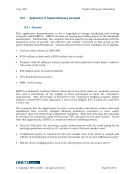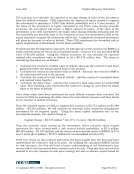June 2007 Capital Adequacy Extension © Copyright 2007, CCRO. All rights reserved. Page 19 of 92 Figure 3.1 Economic Capital Adequacy Framework In the following pages, each component of the framework will be discussed in greater detail and brought together to display how capital adequacy can be assessed for energy companies. 3.1. Determining the Equity Component 3.1.1. Total Asset Determination There are two alternatives for measuring total assets: invested capital and market value. Invested capital uses accounting data and measures assets according to Generally Accepted Accounting Principles (GAAP) and Financial Accounting Standards Board (FASB) pronouncements such as FASB 133. The second alternative, market value, uses economic data and appraises assets with financial models driven by current market-based information. These alternatives have inherent advantages and disadvantages that should be taken into account when deciding which method to use to measure total assets. Furthermore, more companies are opting to provide an economic balance sheet that compliments their GAAP related financial statements in order to provide a clearer understanding of their business to stakeholders 3.1.2. Total Asset Determination: Invested Capital Invested capital is the total capital invested in the company by all capital providers. Both long-term and short-term assets and items such as net plant and equipment should all be included as components of invested capital. For a trading business, not Equity Total Assets Total Liabilities Risk Capital Requirements Operative Risk Credit Risk Market Risk Assess Equity Against Risk Capital Requirements
Purchased by unknown, nofirst nolast From: CCRO Library (library.ccro.org)




























































































